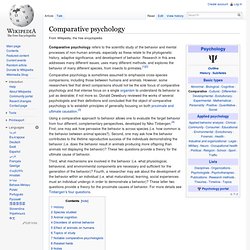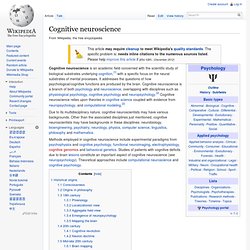

Biofeedback. Biofeedback is the process of gaining greater awareness of many physiological functions primarily using instruments that provide information on the activity of those same systems, with a goal of being able to manipulate them at will.[1][2] Some of the processes that can be controlled include brainwaves, muscle tone, skin conductance, heart rate and pain perception.[3] Biofeedback may be used to improve health, performance, and the physiological changes that often occur in conjunction with changes to thoughts, emotions, and behavior.

Eventually, these changes may be maintained without the use of extra equipment, even though no equipment is necessarily required to practice biofeedback.[2] Biofeedback has been found to be effective for the treatment of headaches and migraines.[4][5] Definition[edit] Sensor modalities[edit] Electromyograph[edit] The "Muscle Whistler", shown here with surface EMG electrodes, was an early biofeedback device[6]
Conversation analysis. Conversation analysis (commonly abbreviated as CA) is an approach to the study of social interaction, embracing both verbal and non-verbal conduct, in situations of everyday life.

As its name implies, CA began with a focus on casual conversation, but its methods were subsequently adapted to embrace more task- and institution-centered interactions, such as those occurring in doctors' offices, courts, law enforcement, helplines, educational settings, and the mass media. As a consequence, the term 'conversation analysis' has become something of a misnomer, but it has continued as a term for a distinctive and successful approach to the analysis of social interaction. CA analysis[edit] As in all research, conversational analysis begins by setting up a research problem. The data collected for CA is in the form of video or audio recorded conversations. Basic structures[edit] Turn-taking organization[edit] Introspection. Introspection is the examination of one's own conscious thoughts and feelings.[1] In psychology the process of introspection relies exclusively on observation of one's mental state, while in a spiritual context it may refer to the examination of one's soul.

Introspection is closely related to human self-reflection and is contrasted with external observation. Introspection generally provides a privileged access to our own mental states,[2] not mediated by other sources of knowledge, so that individual experience of the mind is unique. Introspection can determine any number of mental states including: sensory, bodily, cognitive, emotional and so forth.[3] Introspection has been a subject of philosophical discussion for thousands of years.
The philosopher Plato asked, "…why should we not calmly and patiently review our own thoughts, and thoroughly examine and see what these appearances in us really are? " Comparative psychology. Comparative psychology refers to the scientific study of the behavior and mental processes of non-human animals, especially as these relate to the phylogenetic history, adaptive significance, and development of behavior.

Research in this area addresses many different issues, uses many different methods, and explores the behavior of many different species, from insects to primates.[1][2] Comparative psychology is sometimes assumed to emphasize cross-species comparisons, including those between humans and animals. However, some researchers feel that direct comparisons should not be the sole focus of comparative psychology and that intense focus on a single organism to understand its behavior is just as desirable; if not more so. Donald Dewsbury reviewed the works of several psychologists and their definitions and concluded that the object of comparative psychology is to establish principles of generality focusing on both proximate and ultimate causation.[3] History[edit] the brain of a cat.
Cognitive neuroscience. Cognitive neuroscience is an academic field concerned with the scientific study of biological substrates underlying cognition,[1] with a specific focus on the neural substrates of mental processes.

It addresses the questions of how psychological/cognitive functions are produced by the brain. Cognitive neuroscience is a branch of both psychology and neuroscience, overlapping with disciplines such as physiological psychology, cognitive psychology and neuropsychology.[2] Cognitive neuroscience relies upon theories in cognitive science coupled with evidence from neuropsychology, and computational modeling.[2] Due to its multidisciplinary nature, cognitive neuroscientists may have various backgrounds. Other than the associated disciplines just mentioned, cognitive neuroscientists may have backgrounds in these disciplines: neurobiology, bioengineering, psychiatry, neurology, physics, computer science, linguistics, philosophy and mathematics. Historical origins[edit] Cognitive psychology. Psychodynamics. Psychodynamics, also known as dynamic psychology, in its broadest sense, is an approach to psychology that emphasises systematic study of the psychological forces that underlie human behavior, feelings, and emotions and how they might relate to early experience.

It is especially interested in the dynamic relations between conscious motivation and unconscious motivation.[1] The term psychodynamics is also used by some to refer specifically to the psychoanalytical approach developed by Sigmund Freud (1856–1939) and his followers. Freud was inspired by the theory of thermodynamics and used the term psychodynamics to describe the processes of the mind as flows of psychological energy (libido) in an organically complex brain.[2] In the treatment of psychological distress, psychodynamic psychotherapy tends to be a less intensive, once- or twice-weekly modality than the classical Freudian psychoanalysis treatment of 3-5 sessions per week. Overview[edit]
Applied psychology.